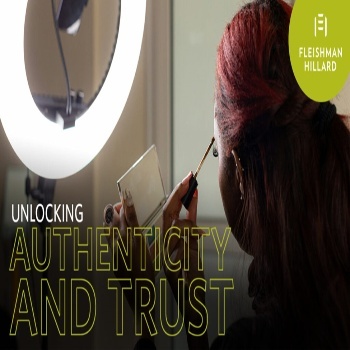“Do Not Disturb” – When Private Moments Are Anything But
Written by Ariadna D. Peretz, Account Manager, FleishmanHillard Hong Kong
July was full of reminders that what happens behind closed doors doesn’t necessarily stay there. First there was the hacking of Ashley Madison (a matchmaking service specializing in extramarital affairs). The very personal details – including names, addresses, sexual fantasies and credit card information – of its 37 million global users were stolen from its servers and the hackers are threatening to release them if the website doesn’t go offline. In the US, text messages between a married male Condé Nast executive and an escort, with whom he was organizing a rendez-vous, were published by an online gossip magazine. Here in Asia, a couple filmed themselves having sex in a Uniqlo changing room and subsequently shared the video via an instant messaging app.
We are living in an increasingly digital world. Everything is done, shared and stored online. Such convenience is amazing but brings a formidable set of challenges. And yet, any fears about privacy (if not allayed by our own naiveté) are soothed by the idea that it’s protected by a raging-hot firewall, rabid three-headed dog and impenetrable encryption.
In other cases we are our own worst enemies, such as when we disregard the perils of oversharing online. Sharing personal information via email or text can cause major repercussions. Once the escort understood his client’s net worth and that his brother is a well-known US politician, he attempted to blackmail him with screenshots of their messages. The Uniqlo sex video was also supposed to be a private encounter (albeit in a public place), and it was kept private until the couple decided to share it with friends via WeChat.
In the end, all three companies have delicate crises that need to be handled swiftly and at the heart of these issues is the fact that having an up-to-date and thorough crisis communication plan is necessary. The saying, “an ounce of prevention is worth a pound of cure” is very applicable to crisis communications. However, it would be an error to think that a crisis communications plan is a panacea – crises are a business problem and communications is but one tool in a company’s business strategy.
FleishmanHillard’s crisis communications approach is called A.R.C.
First the crisis must be Assessed. At this stage, the main objectives are to classify the problem, understand the facts and the different ways it could play out, plan for possible scenarios, prioritize the stakeholders and put all monitoring tools to work. This is where a company decides if it’s going to take an active or passive position.
Next, the crisis needs to be Resolved: What are the long- and short-term strategies? Who is the main spokesperson and what are his/her key messages? What needs to be done to fix the problem?
Last, the crisis must be Controlled. By using an integrated outreach strategy, the company shares its key messages to the public and monitors how the media and public are digesting the information.
Ashley Madison is in the business of cheating and that means that the majority of people will enjoy seeing the company suffer. This is where C.A.P. messaging – Concern, Action and Perspective – comes into play. Ashley Madison must communicate its concern to its stakeholders by saying it is very sorry for the breach of privacy and that it has always done everything it could to protect its clients’ personal details. It is important for Ashley Madison to explain what action it is taking to mitigate the hack’s effects. Lastly, Ashley Madison must offer perspective by explaining that the cyber-vandalism is something that could happen (and indeed it has) to any company. So far, its crisis communications strategy is wanting: The issue came to light on July 20th and while it issued three press releases that same day, it hasn’t put out a press release since.
While many feel that Ashley Madison and its users got their “just desserts,” many people are defending the Condé Nast executive as the victim of an extortion attempt by the escort and gay-shaming by the online gossip magazine. Condé Nast needs to assess the situation and decide if this is something that needs to be responded to publicly. In this case, because the matter is not illegal nor affects the CFO’s professional abilities, it is not recommended that Condé Nast volunteer its opinion. However, it could take the opportunity to internally circulate its social media policy and remind its senior executives that everything is permanent nowadays and the line between their professional life and personal life is blurred. It’s important to remember that a crisis communications plan will outline what a crisis is and what it’s not, thereby helping management to make these types of decisions faster and with peace of mind.
Poor Uniqlo didn’t do anything wrong. It just happened to be “the right place at the right time” for the young couple. In this kind of situation, it is often useful to invoke a little humor. As Chevrolet exemplified with its “Technology & stuff” blunder, poking fun at the situation can bring levity (and maybe a few PR awards if you let FleishmanHillard run with it).


